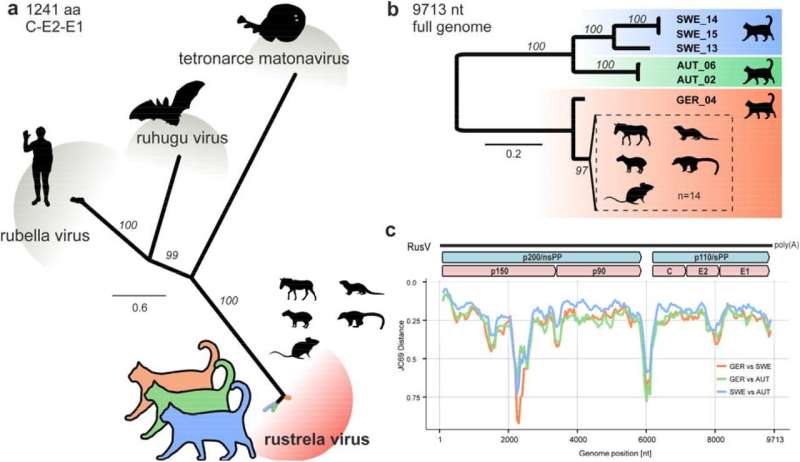July 5, 2022 report
Cause of 'staggering' disease in cats in Europe unraveled

A large team of researchers affiliated with multiple institutions in Germany, Austria and Sweden has found the virus behind the mysterious "staggering" disease killing cats across Europe. The group has written a paper describing their work but it has not yet been peer-reviewed—they have posted it on the bioRxiv preprint site.
The staggering disease afflicting cats has been known to science for nearly a half-century, but it became more of a concern in 2020 when it killed a capybara, a donkey and a tree kangaroo in Germany. Over the years, it has come to be associated with encephalitis in a wide variety of animals.
More recently, the neurological disease has mostly afflicted domestic house cats. Symptoms include loss of ability to retract claws, tremors, loss of control of limbs and seizures. Cats with the disease stagger about as if drunk, leading to its nickname. The disease progresses over approximately two weeks and there is no known cure—there is also very little treatment for infected animals. It is not known how long it takes to kill cats because most if not all victims have been euthanized for humane reasons.
Initial study of the disease suggested it was caused by the Borna disease virus, but subsequent work failed confirm this idea. In this new effort, the researchers took a more serious look at the disease in attempting to find its source. They collected the brains of 29 euthanized cats from sites in Germany, Austria and Sweden. Each of the brains was scanned for evidence of Borna virus DNA but none was found. They did, however, find rustrela virus in 28 of the brains. The rustrela virus is a relative of the rubella virus that infects humans.
The researchers conclude that their findings strongly suggest that the rustrela virus is the cause of staggering disease in cats and note that the virus has typically been seen in wood mice. They further suggest that it is likely also infecting an unknown number of other mammals, possibly including humans.
More information: Kaspar Matiasek et al, Mystery of fatal 'Staggering disease' unravelled: Novel rustrela virus causes severe encephalomyelitis in domestic cats, bioRxiv (2022). DOI: 10.1101/2022.06.01.494454
© 2022 Science X Network




















